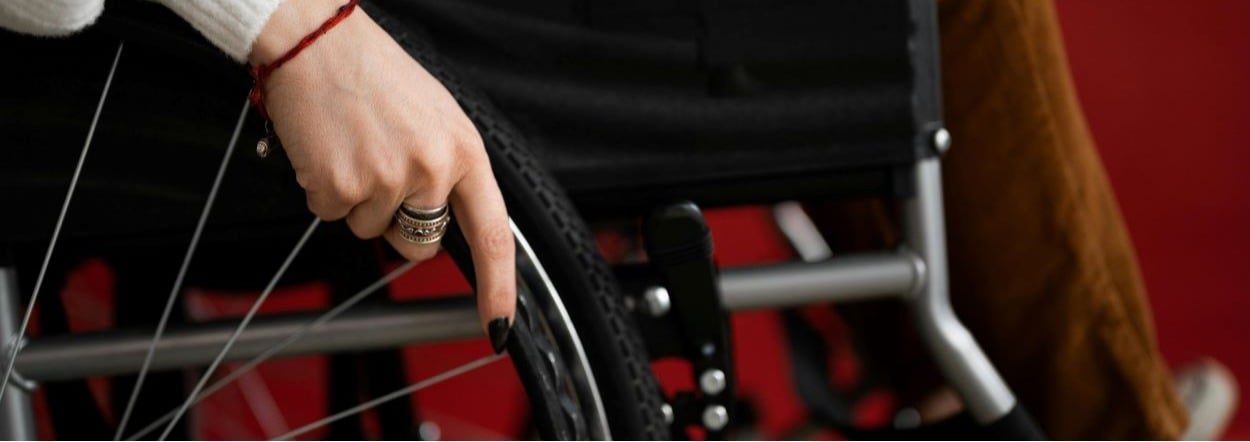Did you know the honeymoon industry is worth $15 billion a year? This is how Kristy Durso, owner of Incredible Memories Travel, founder of the Accessible Travel Network, speaker and manual wheelchair user, set the stage for a whammy of a statistic. “Now, what about accessible travel?” she asked. How much do people with disabilities spend on travel each year? If you guessed at least twice as much as honeymooners, you’d be correct. Durso said a recent study from Open Doors Organization, a non-profit fighting for better accessibility, revealed people with disabilities spend an estimated $58.7 billion on travel on a bi-annual basis.
This begs the question, with such massive earning potential, why do we know so much about the honeymoon and romance niche, but so little about accessible travel? According to Durso, the answer comes down to the many myths surrounding accessibility and disability. Beginning with the way, or lack thereof, we talk about it.
“One (myth is) ‘disability’ is a bad word, and we shouldn’t say it,” said Durso. “Let’s just knock that out of the park, you can say the word ‘disability.’” Diving deeper, Durso recalled more common misconceptions. “When you talk about disabilities, the assumptions are we’re all low income, we’re all sedentary, we’re all comfortable just staying home. Well, this is far from the truth.”
“One of my friends has climbed Mount Kilimanjaro twice. Corey Lee has visited all seven continents, and he’s a power wheelchair user who can’t independently transfer,” she said. “(As an advisor,) I had a mom with ALS who wanted to go to her son’s destination wedding. The assumption immediately was, ‘well the son should have been more considerate and just gotten married at home.’ Why? What if she’s the one who wanted a destination wedding?”

Add to this the fact anyone can become disabled, and the slow crawl to inclusivity becomes even more of a head scratcher. “We span every demographic, and nobody is safe or immune from disability,” said Durso. “There shouldn’t be a limit (as to what we assume people can do). And just like we shouldn’t, as travel professionals, book somebody out of our own pocketbook, we shouldn’t book anybody based on a preconceived notion of what they ‘should’ or ‘should not’ be able to do.”
Curious to learn more about her experience traveling as a manual wheelchair user, we asked Durso to share her insights on what the industry is doing right and how it can improve — by air, at sea and on land.
By Air
When it comes to flying, Durso says broken equipment is the biggest concern among people with disabilities. And for good reason as, according to the DOT’s 2020 Air Travel Consumer Report, airlines break an average of 29 wheelchairs a day. That’s a lot of damage, and while companies “make it right” by providing replacement chairs, Durso says the process can be long and dangerous. “You don’t pick up a custom wheelchair at the store; it has to be designed for the user,” she said. “It’s not like losing a suitcase, it’s not like having a few hours delay. It’s actually life threatening for some wheelchair users.”
Instead of defaulting to checking chairs at the gate, Durso wants people to know that, according to the Air Carriers Access Act (ACAA), manual wheelchairs can be stored in the cabin. According to Durso, this is an area where airlines can improve as she says it’s not uncommon for even airline staff to be unaware of the rule. “If I ask, they’re like ‘yes, of course we can do that.’ Well, why didn’t you offer that to me first instead of creating a gate tag for my chair?” she said. “The first thing should be that it should go in the cabin, not the last resort.”
In addition to making sure their equipment arrives safely, Durso says it’s important for wheelchair users to know their rights. Likewise, it’s essential for travel advisors to know how to advocate for their disabled clients, the first step to which is understanding the difference between the ACAA and ADA, as the two operate under different rules and regulations with the ACAA governing flights that take off and land on U.S. soil.
At Sea
The question “is that accessible?” ultimately comes down to the needs of the individual, which is why, with their various room categories, Durso loves cruises. “(The mass market cruises) have a few different kinds of accessible cabins,” she said. “They have ambulatory wheelchair accessible cabins … Then they have their one-side accessible and their dual-side accessible cabins. So the fact they have that broken up into multiple cabin types makes it a whole lot easier to book.” Another shining moment for cabins is the bathrooms, which Durso says typically include grab bars in the shower and on both sides of the toilet.
However, there are some hurdles the ships have yet to master, including doors, which Durso says can be difficult for wheelchair users to open, and bed height. “A good exercise to find out why (bed height) matters so much is to pull a chair up next to your bed, lift your feet off the ground and get into the bed, if it’s too high, you’ll find it’s pretty much impossible,” she said. “Again, that doesn’t apply to every wheelchair user. Some need it higher because they have bad knees and still use their legs, others need it the height of the bed, some need room to slide a Hoyer lift under it which the cruise lines do a really good job with because they usually leave room for suitcases under the bed.”
Speaking of lifts, a day at the pool looks different for wheelchair users. “A family might be able to go to a pool at any time … (Wheelchair users) have to call, we have to find the right person, ask them to bring the pool lift to the pool, wait for that person to get there (if they can find it, sometimes they have trouble locating it), and then they have to operate it,” said Durso. “So that means we don’t get into the pool until somebody’s ready to help us, and we can’t get out until somebody helps us.” Luckily, this is changing among some brands with Durso giving kudos to Holland America who recently installed permanent lifts in many of its pools, including spa therapy pools.
On Land
When it comes to hotels, Durso says the biggest hurdle is finding consistency across brand portfolios. To illustrate this, she shared that although one of her favorite hotels in Southeast Florida is in line with the ADA and has excellent accessible rooms, she has yet to see more properties from the brand that meet the same standards. Similarly, Durso says it’s not uncommon for disabled travelers to find themselves in the wrong type of accessible room, something she says can be fixed by qualifying travelers better. “We’ve had people who have said, ‘well, I asked for an accessible room and they gave me a hearing accessible room,’” she recalled.
To avoid this, Durso recommends asking for pictures. “(One time) a hotel sent me a picture of the accessible shower so I could see the grab bars in it,” she said. “It looked great, roll-in, zero-entry, fantastic. But there wasn’t a shower bench or chair so I asked them about it, and they said, ‘we don’t provide that, but you can rent it from this place over here.’” This was a red flag. “I said ‘ok, thank you, but we will never book with you again because it’s not really fair for me to be charged for a shower when nobody else is.’ A shower is a basic requirement of a hotel room.”
A similar issue is prevalent throughout Mexico and the Caribbean where travelers are asked to rent beach wheelchairs when hotels don’t provide them. “Don’t charge me more if everybody else is able to walk on the beach,” Durso said. To combat this, she encourages hotels to invest in beach wheelchairs for guests, stating if people aren’t spending money on rentals, they’ll have more to spend at the resort. “It’s a one-time investment and now you’ve opened up the doors to so many more possibilities,” she said. The same goes for lifts and beach wheelchair ramps, which Durso noted hotels need to do better with too. “We have a complete lack of ability to get in the water,” she said. “You may make the room accessible, but you’re not making the resort accessible, and if everyone else can get in the pool, I should be able to get in the pool.”
Of course, it’s not all bad, Durso says hotel brands like Beaches and Disney are doing accessibility right, something she credits to their clear communication and abundance of categories. “When we list out expectations ahead of time, we’re able to manage it better and people get what they want,” she said. “If (hotels) aren’t going to guarantee I’m getting an accessible room, I’m moving on.”
“This isn't like wanting an ocean view versus a tropical view. This is the difference between being able to get in the bed, take a shower, see your face in the mirror and anything else a wheelchair user is going to need. It's not a preference. It shouldn't be treated like a preference,” said Durso. “We have a preference when we request things like ‘I wanna be close to the gym’ or … ‘I wanna be in this building.’ Those are preferences. Those are things you can live without if you don't get them. They're not guaranteed. That's fine, but an accessible room should be guaranteed every single time.”
Orginally appeared in the Winter 2024 issue of The Compass magazine






AmyJ | 02/11/25 - 12:12 PM
I have discovered the majority of the time I run a search on ALG for a vacation package, the defaulted rooms to come up for an itinerary are for mobility accessible rooms. This discourages me, leaving me to believe the accessible rooms would sell out first, to people who are not in need of them, and not be available when there is a genuine need.
1 | reply